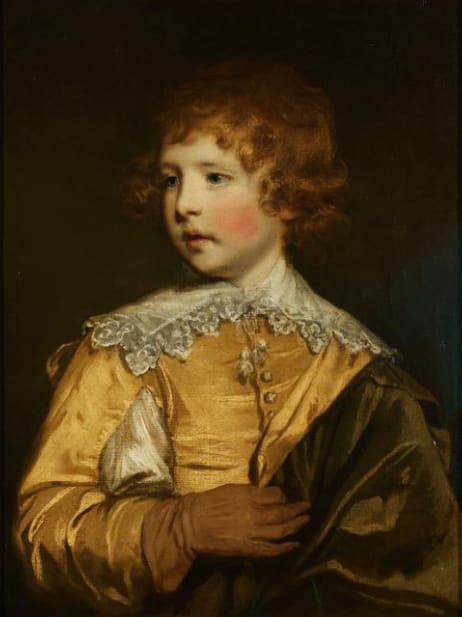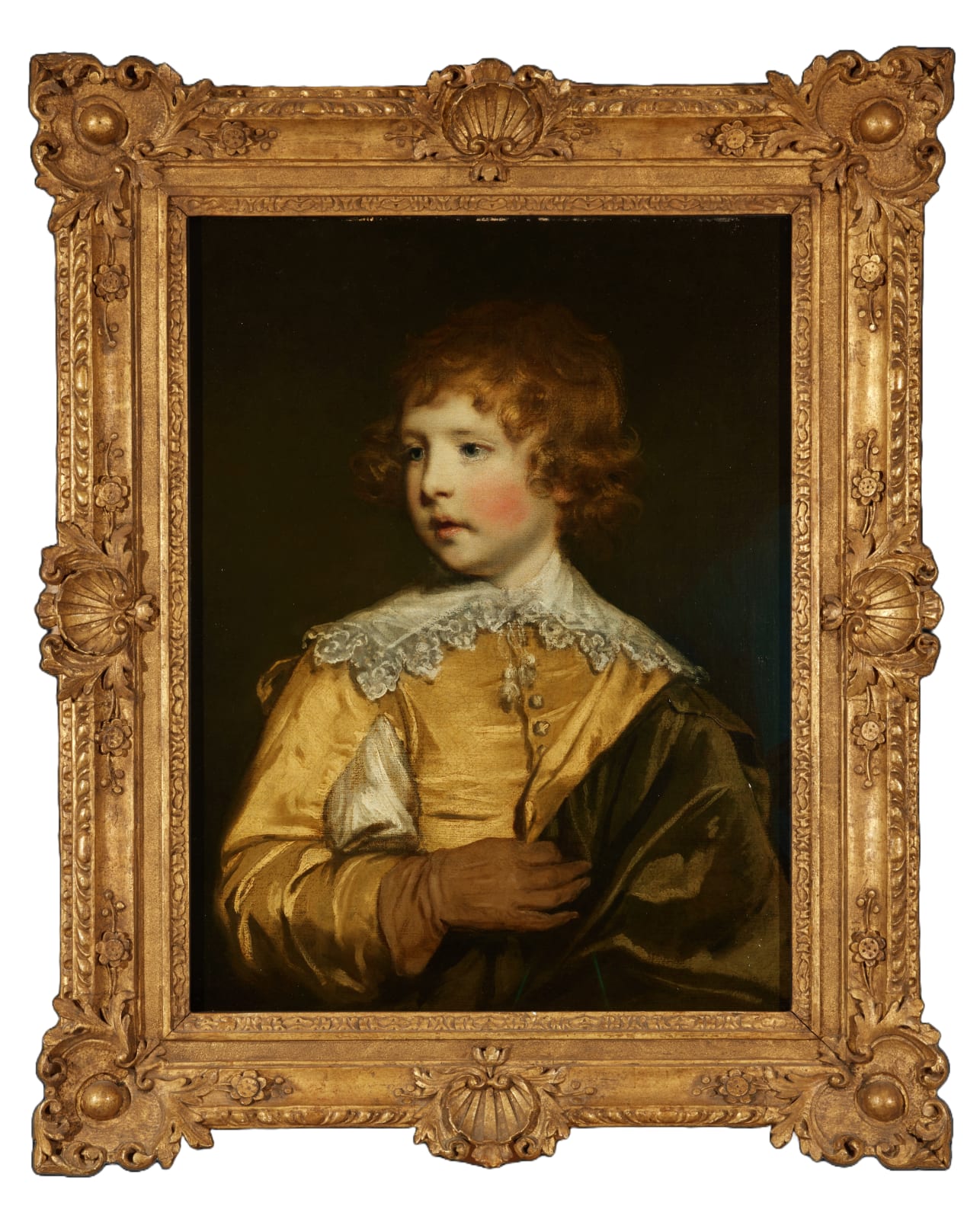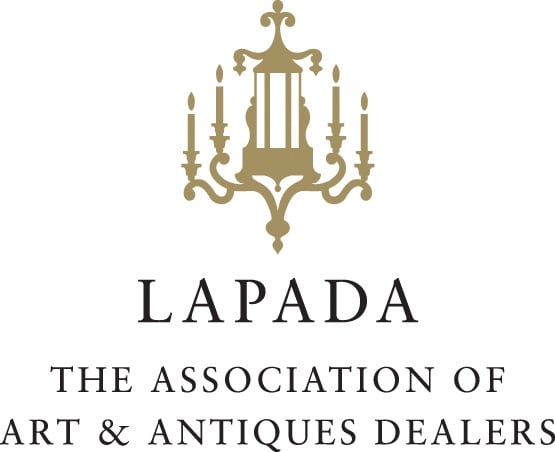Joshua Reynolds 1723-1792
Framed: 82 x 69 cm.; 32¼ x 27 in.
Reynolds stands as a giant of eighteenth-century British art, the visionary genius who transformed a provincial painting tradition into an international force rivalling the continental masters. As founding President of the Royal Academy and Britain’s first knighted artist, he helped establish the intellectual framework that placed British portraiture among Europe’s finest achievements.
Painted in 1770 during Reynolds’s prime decade, the present portrait of Lord George Seymour-Conway (1763-1848) exemplifies his innovative blending of Van Dyck’s aristocratic grandeur with intimate childhood observation, a fusion that fundamentally changed British portraiture. He presents the young nobleman in a three-quarter view against moody brown tones, his golden curls catching light through Reynolds’ signature loose brushwork. Each strand looks lively, shifting between amber and bronze as light moves across the surface. This technique turns still hair into lively texture through purely painterly means. The Van Dyck costume functions as a sophisticated piece of historical commentary. The vivid yellow silk doublet, slashed to reveal white undergarments, directly references seventeenth-century court portraiture, notably echoing Van Dyck’s The Three Eldest Children of Charles I (Royal Collection Trust) and creating a deliberate dialogue between historical and modern nobility. The Seymour-Conway family were descendants of Charles I’s courtiers. The intricate bobbin lace collar flows across small shoulders, while the asymmetrically draped olive- green cloak showcases Reynolds’s mastery of fabric weight and texture through subtle tonal variations. The child’s gaze, directed at an angle away from the viewer, has an introspective quality rarely seen in contemporary childhood portraiture. Reynolds captures natural contemplation instead of artificial poses, revealing personality beneath ceremonial dress. The slightly parted lips hint at imminent speech; the eyes reflect inherited dignity tempered by childhood curiosity.
Commissioned by Francis Seymour-Conway, 1st Marquess of Hertford, as part of an extensive family programme, the portrait remained in their collection for nearly two centuries. Many of the works were subsequently inherited by Sir Richard Wallace and now form part of the Wallace Collection.
Provenance
Painted for the sitter's father, afterwards 1st Marquess of Hertford
By descent to the 7th Marquess of Hertford
Sold 1938, by Spink's to H.M. King Carol of Romania
Bequeathed to his mistress Madame Lupescu
Sold by her to a lady resident in Mexico City
Bequeathed by her to her niece resident in Portugal
Christie's, London, 27 March 1981, lot 150
Agnew's, London (purchased from the above)
Private Collection (purchased from the above)
Exhibitions
Worcestershire Exhibition, 1882London, Grosvenor Gallery, 1883, no. 202
Guildhall, 1890, no. 191
London, 45 Park Lane 1937, no. 50
London, Royal Academy, 1986, no. 76
Literature
Graves, A., and Cronin, W.V., History of the Works of Sir Joshua Reynolds, vol. 1, London, 1899-1901, pp. 191-2Waterhouse, E.K., Reynolds, London, 1941, p.61
Cormack, M., The Ledgers of Sir Joshua Reynolds, Walpole Society, XLII, 1970, p. 116
Penny, N. et al., Reynolds, London, 1985, p. 120 (illustrated), pp. 244-245
Davis, L. and Hallet, M. et al., Joshua Reynolds: Experiments in Paint, London, 2015, p. 20 (illustrated)
Mannings, D., Sir Joshua Reynolds: A Complete Catalogue of his Paintings, New Haven, 2000, p.143




